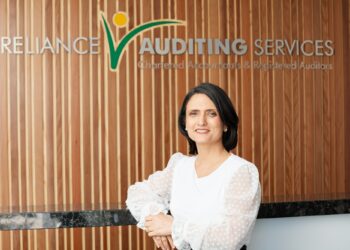The importance of BRP comes from it being one of the few assets exempted under s66 SIS acquired from a related party, which means it will not become an in-house asset of the fund.
All of the other requirements of the SIS legislation, however, will apply, as the acquisition must:
- Be allowed by the trust deed.
- Meet the needs of the fund’s investment strategy.
- Be acquired at market value from an independent valuation before purchase.
- Not have a loan or charge over the asset (unless obtained under a limited recourse borrowing arrangement).
And to be clear, a residential unit on the Gold Coast where an SMSF trustee lives and operates an online business will fall short of the BRP definition.
Definition of BRP
BRP generally means land and buildings used wholly and exclusively in a business. There are two (2) necessary conditions that BRP must satisfy before acquisition:
- The SMSF or related entity must hold an eligible interest in real property.
- The underlying land must meet the business use test, i.e. the real property has to be used wholly and exclusively in one or more businesses carried on by an entity (refer SMSFR 2009/1).
Remember, too, that an eligible interest in BRP only includes freehold or leasehold interests or interests in Crown land that can be assigned or transferred.
The issue at stake here is the land and building’s current use, which means reviewing the operations, activities or actions that enable the business use test to be applied.
By way of example, an owner of land may grant a lease over part of that land. In these circumstances, the lessee holds a leasehold interest in the land and has an eligible interest.
The “wholly and exclusively” threshold can still apply where there is a minor, insignificant or trifling non-business use of the property. However, the property will fail the business use test where the land is idle, dormant or not used.
Is a business being carried on?
All of the entity’s activities are relevant to whether it constitutes a business being carried on, which includes:
- The keeping of business records separately to personal records.
- The size of the operation and the extent of capital investment involved.
- Whether activities are conducted continuously and systematically rather than on an ad hoc basis.
- The engagement of employees.
- A purpose and intention to carry on business.
- A level of repetition and regularity of activities constituting the business.
- Whether activities are carried on similarly to other like businesses.
- Whether activities are planned, organised and carried on in a businesslike manner.
- The scale and permanency of operations.
- The existence of a business plan.
Therefore, it would be difficult to demonstrate that a property met the definition of BRP where the business was operating for only a short time before the SMSF acquired it.
Vacant land
Classifying vacant land as BRP is easy where a business is using the property. While constructing buildings or premises on the property is not required, the key is land use.
A typical example is where vacant land used as a car park may be business real property if it is run as a business. In this case, allowing drivers (under the terms of a contractual licence) to bring their vehicles onto the land to use the property enables the business use test to be applied.
Conversely, an unused vacant block classified as “trading stock” of a related entity would not be a compliant acquisition. Such a transaction would not be in line with exemptions outlined in s66 SIS, which is only the purchase of BRP or listed shares.
Is a fixture part of the property?
Whether a building or other fixtures constitute “real property” is subject to the degree of annexation test and the object of annexation test, which considers whether the building or fixture is attached to the land in any other way than by its own weight.
If it is, then the building or fixture is considered to be part of the land. Alternatively, if it is only attached to the land by its own weight, it is assumed that it does not form part of the land.
Even where a building or fixture is affixed to the land, the object of annexation test must be considered. The test involves whether the object and purpose of the affixation were for the fixture or the land’s benefit.
Where it was affixed to the land for the benefit of the building or only affixed temporarily, it is not a fixture and does not form part of the land. As a fixture is separate from the land, it cannot be BRP and will not attract concessional treatment under SIS.
Demountable buildings, for example, are not fixtures and do not form part of the “real property”.
In contrast, a building may have been originally demountable but becomes a fixture and now forms part of the real property. Indicators here include its attachment to permanent foundations and water and electricity connections.
Conclusion
Determining the real purpose of the business use test requires questions of fact and degree in each case. The physical use of the real property is key to understanding the parameters of SMSF compliance.
It will be incumbent on the SMSF trustee to demonstrate that the real property is undertaking operations, activities or actions that enable the business use test to be applied.
The basic rule of thumb is that related party transactions are rated high risk so that SMSF auditors will take a much closer look at BRP during the audit.
The more information provided by SMSF trustees up front will result in fewer queries and a more efficient audit — a win-win for everyone.
Shelley Banton, head of education, ASF Audits



A really good artiicle Shelly ; a great summary of a commonly asked questions
One of the commonly sked questions is of course
The building does not have a commercial zoning , but has been used as a medical practice for 20 years ; does that qualify as BRP ;
thanks again .